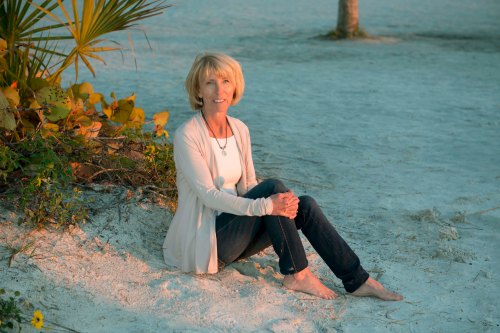
Q: I’ve decided to try to write historical fiction. Do you have any good research pointers?
A: Great question! I need to do a lot of research for my own historical fiction and non-fiction writing projects. Over the years, I’ve gotten the process more streamlined.
Here are a few things I’ve learned over the years:
DO AN OUTLINE OF ‘RESEARCH NEEDED’ BUT DON’T GET TOO ATTACHED TO IT. It’s like mapping out a trip. You may have an itinerary in place, and you set off intending to stick to it…but if you stumble into a fabulous museum, or the skies open up just when you were scheduled to hike in the woods, you’ll need to switch gears. Similarly, when you begin to research a topic, you may find exciting or disappointing or non-existing information along the way that might require your changing the slant of your story. Point yourself in the right direction, but be flexible.
BEGIN WRITING AS SOON AS YOU HAVE ENOUGH DATA TO DO A FIRST DRAFT. YOU CAN WRITE AND RESEARCH AT THE SAME TIME. In other words, when you have the bare bones of a story revealed in the information you’ve found, don’t delay the start of your actual writing process. No matter how long you’ve waited to begin writing, you’ll inevitably reveal through the process of bringing a first draft into being, a host of things that still need to be researched, such as: what kind of clothing would my character wear? Which flowers would be in bloom in my setting in late April? Etc. Whenever questions arise, make a note to check on them as soon as possible after your writing time. While it’s great to have a wealth of good research at hand, it’s all too easy to fall into the trap of delaying the actual writing work because you keep telling yourself you don’t have enough data. You probably do.
KEEP NOTES. REALLY, REALLY GOOD NOTES. Dedicate a file folder or a file box to all of your sources. Be careful to keep any pages you’ve copies from books or other documents separate from others, and labeled on each page from which source it came. I like to make a master list numbering research sources, so I can put ALL the information needed to track the book, original document, website, etc., if I need to get it back to me for double-checking. This is also the sort of crucial information you’ll need for the compilation of your bibliography when it’s time to submit it to a publisher with your manuscript submission.
MAKE YOUR LIBRARIAN YOUR NEW BEST FRIEND. (AS IF YOUR FRIENDLY, NEIGHBORHOOD LIBRARIAN ISN’T ALREADY YOUR BBFF!) Librarians, especially research librarians, are the peeps you will treasure as you research your novel, short story, or non-fiction book. These talented and energetic folks know where to find the hard-to-find information you’ll need to make your manuscript shine. They can search multiple databases with a smile, facilitate inter-library loans of rare books housed in other collections, and will greatly appreciate those roses or chocolates you bring to celebrate your publishing contract thanks to their generous efforts.
DON’T LIMIT YOURSELF TO WEBSITES FOR YOUR RESEARCH. We know websites offer all sorts of interesting information but, unfortunately, they are not always accurate. You need ‘vetted’ data to write your manuscript, so always back up leads from online with published books, primary source material—such as historical documents, tapes, photos, or correspondence—trips to museums, and interviews with established experts on your topic. Make a wide net for your research, and always confirm the facts you’ve found are authentic. Taking the time to do this now will save you headaches later. And make your manuscript stand out from the crowd!
DIANNE’S BIO:
Dianne Ochiltree is a nationally recognized author of books for the very young. Her books have appeared on numerous recommended reading lists, classroom desks and library shelves. Her bedtime book, LULL-A-BYE, LITTLE ONE, was a selected for the Dollywood Foundation’s childhood literacy initiative, Imagination Library in 2007. Her picture book, MOLLY BY GOLLY! THE LEGEND OF MOLLY WILLIAMS AMERICA’S FIRST FEMALE FIREFIGHTER, received the Florida Book Awards (FBA) Bronze Medal in the Children’s Literature category in 2012 and was chosen for the ALA’s Amelia Bloomer list of feminist literature for girls. Her picture book, IT’S A FIREFLY NIGHT, won the FBA Silver Medal in 2013. Her 2015 title, IT’S A SEASHELL DAY, was given the FBA Gold Medal/Gwen Reichert Award as well as the Gold Medal for Florida picture book from the Florida Authors and Publishers Association. For more information about Dianne’s books, go to http://www.dianneochiltree.com.
Dianne, thanks for sharing your expertise with us. Another great answer.
REMEMBER: To send in your questions for Dianne. Use Kathy(dot)Temean(at)gmail.com. Please put ASK DIANNE in the subject box.
Talk tomorrow,
Kathy
I have been toying with writing a historical novel. Thanks for the tips!
LikeLiked by 1 person
By: Writing your first novel-Some things you should know on September 12, 2017
at 9:53 am
Excellent advice…Thank you Dianne!
LikeLike
By: ibeawildgirl on September 12, 2017
at 11:12 am
Just finished my last editing (I hope) on my historical fiction, thanks for the advice it sure helped a great deal
LikeLike
By: Lucy Lantz on September 12, 2017
at 12:35 pm
This is all wonderful advice, Dianne 🙂 And even if your work isn’t historical! Thank you 😀 I also make folders in my browser (Firefox, Chrome, etc.) to organize sites when I search for anything on the net.
LikeLike
By: writersideup on September 12, 2017
at 1:08 pm
All good advice! And be prepared for A LOT of work…but fun discoveries too.
LikeLike
By: Carol Federlin Baldwin on September 12, 2017
at 1:27 pm
I’m researching while writing so thank you for the validation that it’s an okay way to do it!
LikeLike
By: Teresa Robeson on September 13, 2017
at 12:35 pm
Great tips Dianne.
LikeLike
By: darlenebeckjacobson on September 13, 2017
at 9:21 pm